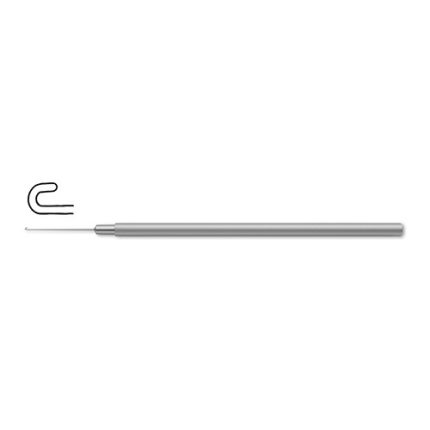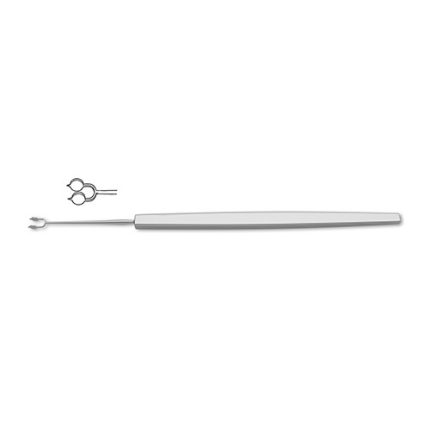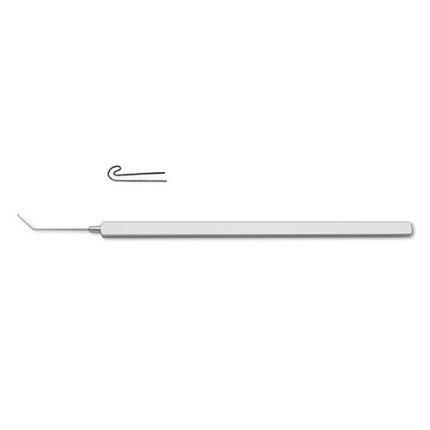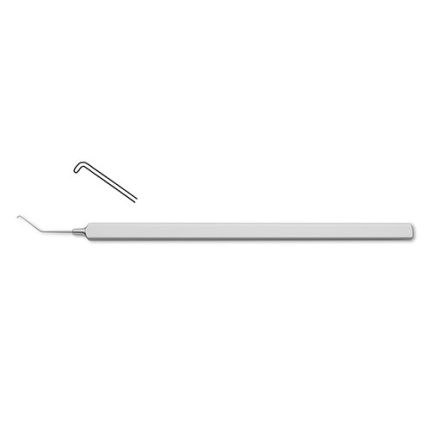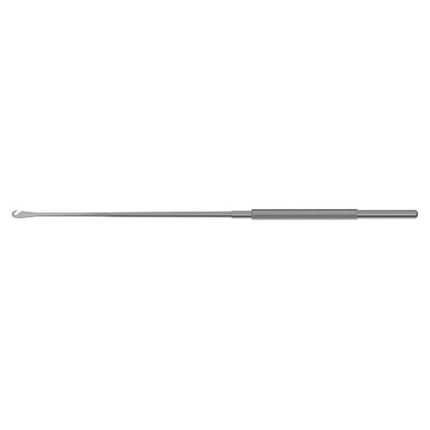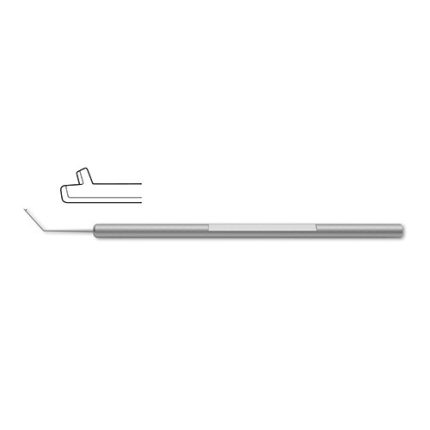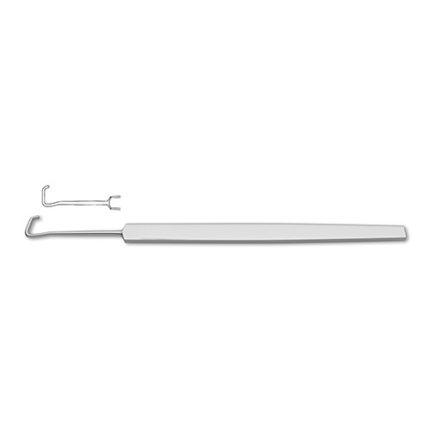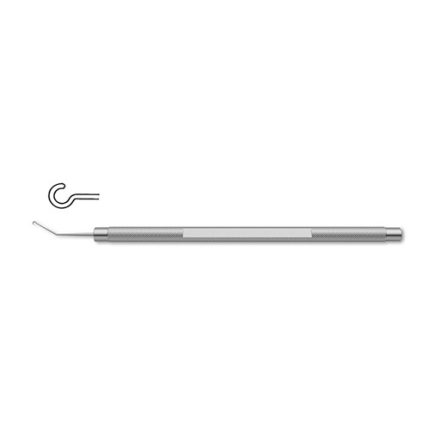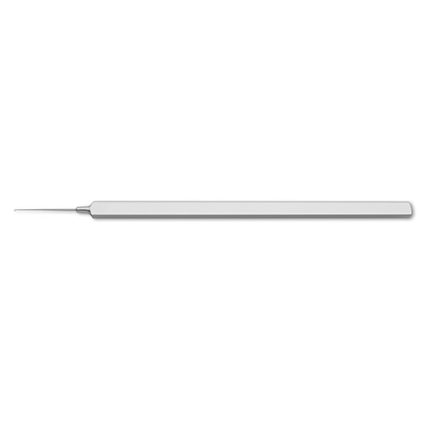Bonn Iris Hook
Burch Fixation Pick
Clayman Iris Hook
Clayman-Jaffe Lens Manipulating Hook
9.0 mm shaft w/ 0.2 mm hook, angled 45 degrees, 4-3/4" (12.0 cm)s Clayman-Jaffe Lens Manipulating Hook is a commonly used tool during cataract procedures. The hook is used to manipulate the opacified native lens during a phacoemulsification procedure. The 45 degree angled hook is ideal for moving the lens into a desired position for removal.
Crawford Retrieving Hook
round handle, 5-5/8" (14.3 cm) Crawford Retrieving Hook is a frequently used tool in occuloplastic procedures. The hook is used primarily to engage a silicone shut placed through the lacrimal apparatus from the nose. The extended length of the hook is designed to accommodate a variety of patient sizes.
Double Fixation Hook
5-1/4" (13.5 cm) Double Fixation Hook is a useful tool in ophthalmic and occuloplastic procedures. The instrument may be used to atraumatically fix the lid or other skin flaps for manipulation of deeper tissues. Two different hook widths are available depending on surgical preference and patient variation.
Fenzel Lens Manipulator
10.0 mm shaft w/ 0.2 mm t-shaped hook, 4-3/4" (12.0 cm) Fenzel Lens Manipulator is a commonly used tool during cataract procedures. The manipulator features an additional stabilizing bar on the tip to aid in controlling the lens to an appropriate position for extraction. Both straight and angled models are available depending on surgical preference.
Gass Retinal Detachment Hook
5-3/4" (14.5 cm) Gass Retinal Detachment Hook is a multipurpose tool used for procedures involving the retina and extraoccular muscles. The rounded hook may be used to examine the delicate retinal tissue for manipulation following detachment. IN addition, the wide tip is handy for the lifting of extraocular muscles for the passing of sutures.
Green Strabismus Hook
flat handle, 5-1/8" (13.0 cm) Green Strabismus hook is a commonly used instrument in performing procedures involving the ocular muscles. The hook can be used to elevate the muscle tissue for dissection and reattachment. The toe of the hook is designed to press against the sclera and "ski" along the surface until the full muscle width has been discerned.
Harris-Sinskey Lens Manipulating Hook
0.25 mm diameter, blunt tip, angled Harris-Sinskey Lens Manipulating Hook is a useful tool in cataract procedures. The hook may be used to maneuver lens tissue in order to facilitate extraction of the opacified tissue. The smaller diameter hook affords the surgeon increased control during the procedure. In addition, the blunt tip ensures minimal tissue damage or posterior capsule tear.
Hirschman Iris Hook
0.75 mm hook, angled, 4-3/4" (12.0 cm) Hirschman Iris Hook is a commonly used tool during cataract procedures and operations needing access to the lens capsule. The 0.75mm hook provides fine control while retracting only a selected portion of iris tissue. A blunted tip assures minimal tissue damage to the surrounding globe.
Jaffe Lens Manipulating Hook
0.15 mm diameter, straight, 4-1/2" (11.5 cm) Jaffe Lens Manipulating Hook is a commonly used tool during cataract procedures. The hook is used to manipulate the opacified native lens during a phacoemulsification procedure. The thin shaft of the hook is meant to maximize control of the instrument while providing enough leverage to maneuver the lens into a desired position.

